文章目录
- 1. 插入数据(Create)
- 1.1 全列插入
- 1.2 指定列插入
- 1.3 多行数据插入
- 1.4 插入否则更新
- 1.5 替换
- 2. 读取数据(Retrieve)
- 2.1 select列
- 2.2 where条件
- 2.3 结果排序
- 2.4 筛选分页结果
- 3. 修改数据(Update)
- 4. 删除数据(delete)
- 4.1 删除数据
- 4.2 截断表
- 5. 插入查询的结果
- 6. 分组与聚合统计
- 6.1 聚合统计
- 6.2 group by子句分组
对数据的操作本质上就是增删查改,在mysql中,他们有特别的名字,我们将其称为
CRUD(
Creat Retrieve Update Delete),接下来我们依次介绍这些内容
1. 插入数据(Create)
语法:
insert [into] table_name[column [, column ...]] values (value_list)[, (value_list)] ...
value_list: value [, value] ...
接下来的测试表结构:

1.1 全列插入
insert into student values (1, '张三', '101');

1.2 指定列插入
insert into student (name, class_id) values ('李四', 102);

1.3 多行数据插入
insert into student (name, class_id) values ('王五', 101), ('赵六', 101), ('钱七', 102);

1.4 插入否则更新
数据插入时,可能会因为主键或者唯一键冲突而导致插入失败,此时可以选择性的进行同步更新操作。
语法:
insert ... on duplicate key updatecolumn = value [, column = value] ...

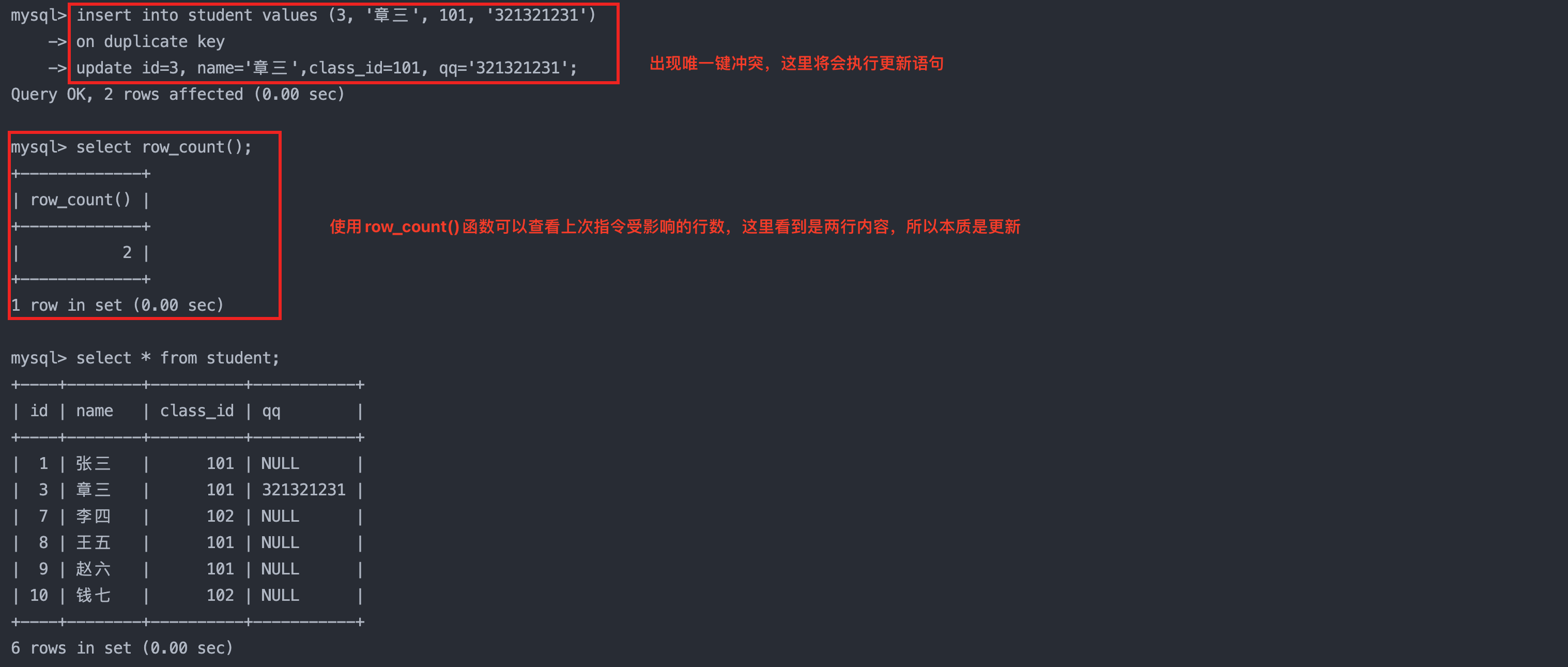
1.5 替换
语法:
replace [into] table_name[column [, column ...]] values (value_list)[, (value_list)] ...
value_list: value [, value] ...
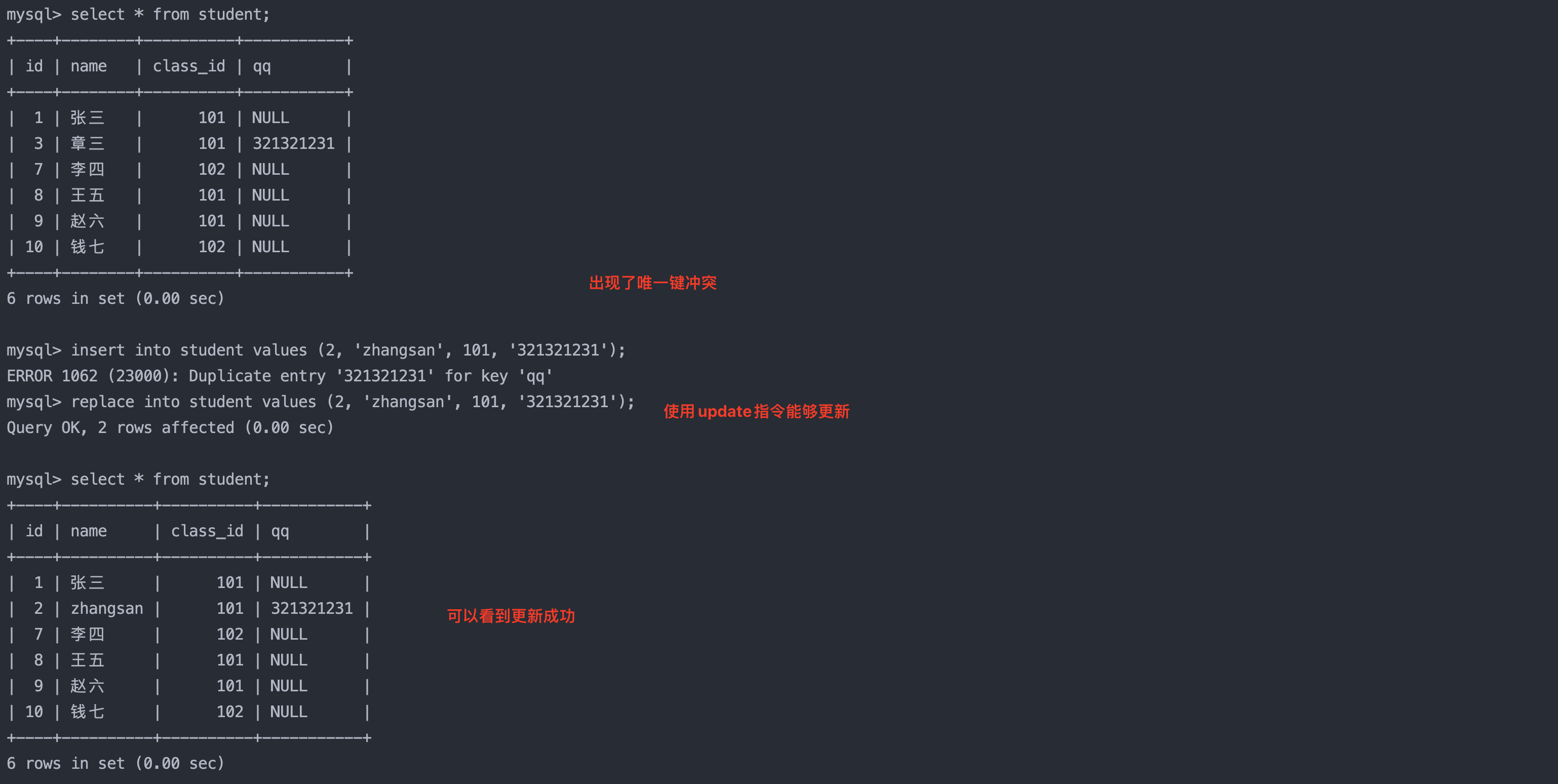
2. 读取数据(Retrieve)
案例构建:
create table if not exists result_exam(id int unsigned primary key auto_increment,name varchar(20) not null comment '姓名',chinese float default 0.0 comment '语文成绩',math float default 0.0 comment '数据成绩',english float default 0.0 comment '英语成绩'
);
insert into result_exam (name, chinese, math, english) values('张三', 67, 98, 56),('李四', 87, 78, 77),('王五', 88, 98, 90),('赵六', 82, 84, 67),('钱七', 55, 85, 45),('章八', 70, 73, 78),('吴九', 75, 65, 30);
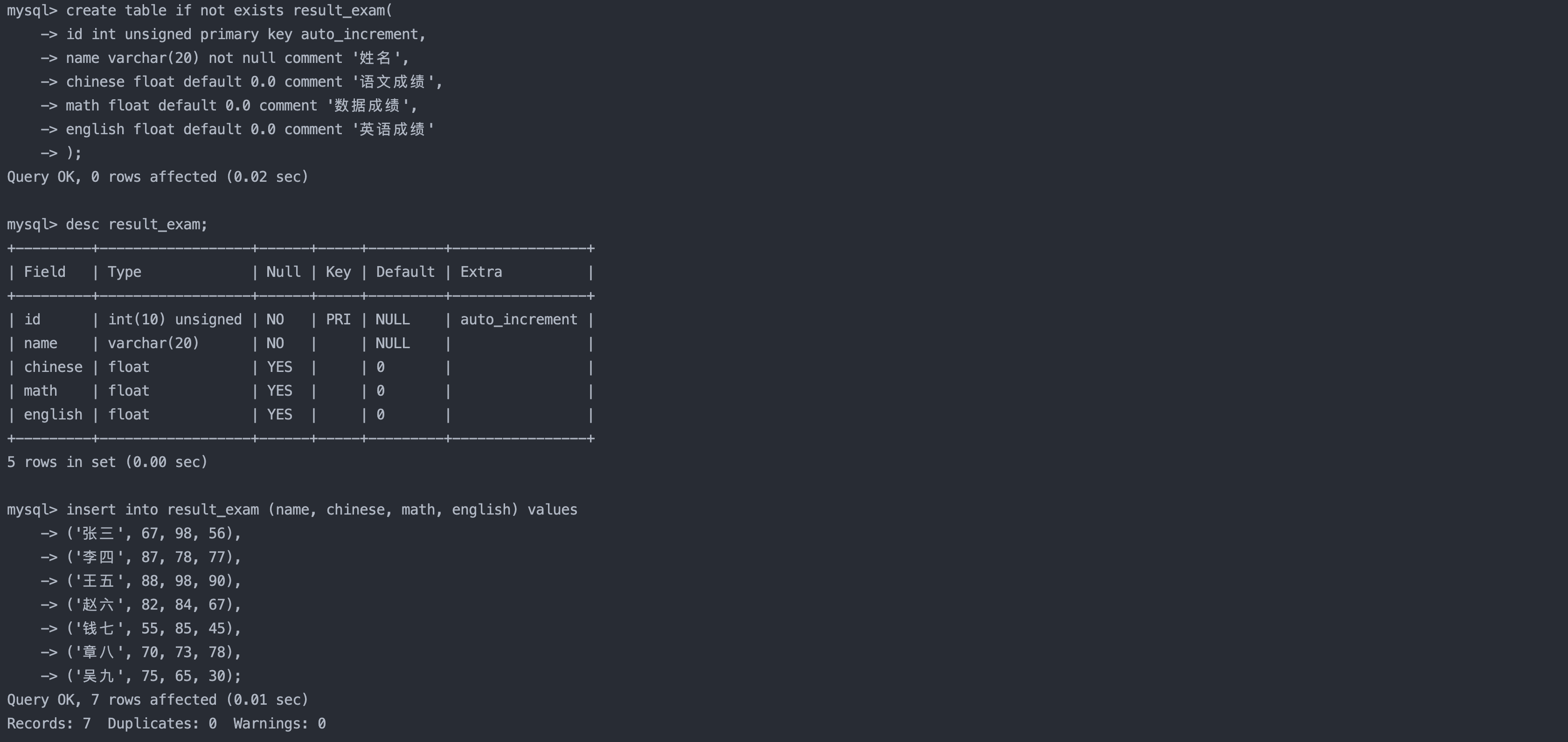
2.1 select列
基本语法:
SELECT[DISTINCT] {* | {column [, column] ...} -- 这里可以是*或者任何列,列之间使用“,”隔开[FROM table_name] -- 这里是从那个表中查询[WHERE ...] -- 筛选表中符合条件的数据[ORDER BY column [ASC | DESC], ...] -- 对筛选出来的数据进行排序LIMIT ... -- 对排序出的数据进行分页显示
注意:通常情况下不建议使用 * 进行全列查询
- 查询的列越多,意味着需要传输的数据量越大;
- 可能会影响到索引的使用。(索引待后面课程讲解)
1. 全列查询

2. 指定列查询

3. 表达式查询与计算

4. 为查询结果指定别名
语法:
select column [as] alias_name [...] from table_name;

5. 去重结果
语法:
select distinct ...
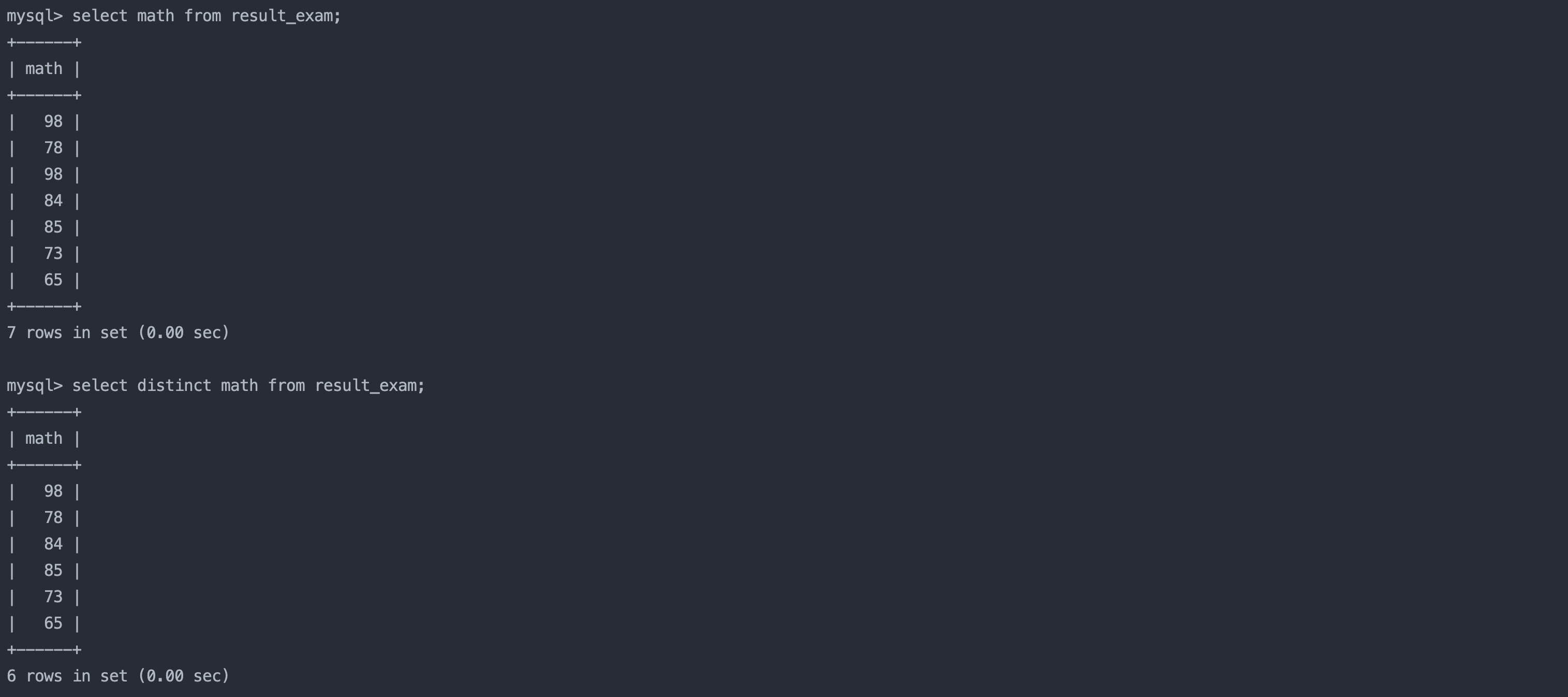
2.2 where条件
和C/C++的条件表达式类似,这里的条件也是选取表达式为真的结果,那么自然会有一些比较运算符和逻辑运算符
- 比较运算符
| 运算符 | 说明 |
|---|---|
| >,>=,<,<= | 大于,大于等于,小于,小于等于 |
| = | 等于,NULL不安全,例如NULL = NULL的结果是NULL |
| <=> | 等于,NULL安全,例如NULL = NULL的结果是true(1) |
| !=,<> | 不等于 |
| between a0 and a1 | 范围匹配,[a0,a1],如果a0 <= value <= a1,返回true |
| in(option, …) | 如果是option中的任意一个,返回true |
| is null | 是null |
| is not null | 不是null |
| Like | 模糊匹配。%表示任意多个(包括0个)任意字符;_表示任意一个字符 |
- 逻辑运算符
| 运算符 | 说明 |
|---|---|
| and | 多个条件都必须为true(1), 结果才是true(1) |
| or | 任意一个条件为true(1),结果为true(1) |
| not | 条件为true(1),结果为false(0) |
案例:
1. 英语不及格的同学及英语成绩 ( < 60 )
select name, english from result_exam where english < 60;
2. 语文成绩在 [80, 90] 分的同学及语文成绩
select name,chinese from result_exam where chinese >= 80 and chinese <= 90; -- 使用逻辑运算符 select name,chinese from result_exam where chinese between 80 and 90; -- 使用between and
3. 数学成绩是 58 或者 59 或者 98 或者 99 分的同学及数学成绩
select name, math from result_exam where math=58 or math=59 or math=98 or math=99; -- 使用逻辑运算符 select name, math from result_exam where math in(58,59,98,99); -- 使用in表达式
4. 姓张的同学 及 张某同学
select * from result_exam where name like '张%'; -- % 匹配任意多个(包括 0 个)任意字符 select * from result_exam where name like '张_'; -- _ 匹配1个任意字符
5. 语文成绩好于英语成绩的同学
select name, chinese, english from result_exam where chinese > english;
6. 总分在 200 分以下的同学
select name, chinese + math + english as 总分 from result_exam where chinese + math + english < 200; -- 注意,这里不能在where子句中使用select的重命名,因为查询语句中是先执行where子句,此时还没有重命名
7. 语文成绩 > 80 并且不姓张的同学
select name, chinese from result_exam where chinese > 80 and name not like '张%';
8. 张某同学,否则要求总成绩 > 200 并且 语文成绩 < 数学成绩 并且 英语成绩 > 80
select name, chinese + math + english as 总分 from result_exam where name like '张_' or (chinese + math + english > 200 and chinese < math and english > 80 );
9. NULL查询
select name, qq from student where qq is not null;
在最开始我们说到where的比较运算符中有NULL安全和NULL不安全之分,这里我们演示一下
2.3 结果排序
select ... from table_name [where ...]order by column [asc|desc], [...];
-- asc 为升序(从小到大) -- desc 为降序(从大到小) -- 默认为 ASC
注意:没有 ORDER BY 子句的查询,返回的顺序是未定义的,永远不要依赖这个顺序
案例:
1. 同学及数学成绩,按数学成绩升序显示
select name, math from result_exam order by math;
2. 同学及 qq 号,按 qq 号排序显示
select name, qq from student order by qq;
3. 查询同学各门成绩,依次按 数学降序,英语升序,语文升序的方式显示
select name, chinese, math, english from result_exam order by math desc, english, chinese; -- order by的排序顺序可以有多个排序规则,按照先后顺序排序,执行排序
4. 查询同学及总分,由高到低
select name, chinese + math + english as 总分 from result_exam order by 总分 desc; -- 在order by的时候可以使用 select 语句的地方重命名的表达式,因为order by的执行本质上是将select查询到的内容进行排序,所以是先执行select再执行order by
5. 查询姓张的同学或者姓赵的同学数学成绩,结果按数学成绩由高到低显示
select name, math from result_exam where name like '张%' or name like '赵%' order by math;
2.4 筛选分页结果
语法:
-- 起始下标为 0
-- 从 0 开始,筛选 n 条结果
select ... from table_name [where ...] [order by ...] limit n;
-- 从 s 开始,筛选 n 条结果
select ... from table_name [where ...] [order by ...] limit s, n;
-- 从 s 开始,筛选 n 条结果,比第二种用法更明确,建议使用
select ... from table_name [WHERE ...] [order by ...] limit n offset s;
建议:对未知表进行查询时,最好加一条 LIMIT 1,避免因为表中数据过大,查询全表数据导致数据库卡死
案例:
1按 id 进行分页,每页 3 条记录,分别显示 第 1、2、3 页
select * from result_exam order by id limit 3 offset 0; select * from result_exam order by id limit 3 offset 3; select * from result_exam order by id limit 3 offset 6;
3. 修改数据(Update)
语法:
update table_name set column = expr [, column = expr ...][where ...] [order by ...] [limit ...]
案例:
1. 将李四的数学成绩变更为80分
update result_exam set math = 80 where name = '李四';
2. 将赵六同学的数学成绩变更为 60 分,语文成绩变更为 70 分
update result_exam set math = 60, chinese = 70 where name = '赵六';
3. 将总成绩倒数前三的 3 位同学的数学成绩加上 30 分
select name, math, chinese + math + english as 总分 from result_exam order by chinese + math + english asc limit 3 offset 0; -- 查看数据 update result_exam set math = math + 30 order by chinese + math + english asc limit 3; -- 修改指定数据 select name, math, chinese + math + english as 总分 from result_exam where name in ('钱七', '吴九', '李四'); -- 查看之前修改的数据
4. 将所有同学的语文成绩更新为原来的2倍
select name, chinese from result_exam; -- 查看全表 update result_exam set chinese = chinese * 2; -- 没有限制则更新全表 select name, chinese from result_exam; -- 查看更新后的数据
4. 删除数据(delete)
4.1 删除数据
语法:
delete from table_name [where ...] [order by ...] [limit ...]
案例:
1. 删除张三二的成绩
select * from result_exam where name='张三二'; delete from result_exam where name='张三二'; select * from result_exam where name='张三二';
2. 删除整张表
-- 准备测试表 create table for_delete (id int primary key auto_increment,name varchar(10) ); -- 插入表数据 insert into for_delete (name) values ('A'), ('B'), ('C'); -- 查看插入的数据 select * from for_delete; -- 删除表 delete from for_delete; -- 查看删除之后的结果 select * from for_delete;
4.2 截断表
语法:
truncate [table] table_name
注意:这个操作慎用,原因如下
- 只能对整表操作,不能像
delete一样针对部分数据操作;- 实际上 MySQL 不对数据操作,所以比
delete更快,但是truncate在删除数据的时候,并不经过真正的事物,所以无法回滚- 会重置
auto_increment项
案例:
create table for_truncate (id int primary key auto_increment, name varchar(20)); -- 准备测试表
insert into for_truncate (name) values ('A'), ('B'), ('C'); -- 插入测试数据
select * from for_truncate; -- 查看测试数据
truncate for_truncate; -- 截断整表数据,注意影响行数是 0,所以实际上没有对数据真正操作
select * from for_truncate; -- 查看删除结果
insert into for_truncate (name) values ('D'); -- 再插入一条数据,自增 id 在重新增长
select * from for_truncate; -- 查看数据
show create table for_truncate\G; -- 查看表结构,会有 AUTO_INCREMENT=2 项

5. 插入查询的结果
案例:
insert into table_name [(column [, column ...])] select ...
案例:删除表中的的重复复记录,重复的数据只能有一份
create table duplicate_table (id int, name varchar(20)); -- 创建原数据表
-- 插入测试数据
insert into duplicate_table values (100,'aaa'), (100, 'aaa'), (200,'bbb'), (200,'bbb'), (200,'bbb'), (300,'ccc');
处理思路:
- 创建一张空表 no_duplicate_table,结构和 duplicate_table 一样
- 将 duplicate_table 的去重数据插入到 no_duplicate_table
- 通过重命名表,实现原子的去重操作
- 查看最终结果
代码:
create table no_duplicate_table like duplicate_table; insert into no_duplicate_table select distinct * from duplicate_table; rename table duplicate_table to old_duplicate_table, no_duplicate_table to duplicate_table; select * from duplicate_table;
6. 分组与聚合统计
6.1 聚合统计
| 函数 | 说明 |
|---|---|
| count([distinct] expr) | 返回查询到的数据的 数量 |
| sum([distinct] expr) | 返回查询到的数据的 总和,不是数字没有意义 |
| avg([distinct] expr) | 返回查询到的数据的 平均值,不是数字没有意义 |
| max([distinct] expr) | 返回查询到的数据的 最大值,不是数字没有意义 |
| min([distinct] expr) | 返回查询到的数据的 最小值,不是数字没有意义 |
案例:
1. 统计班级共有多少同学
select count(*) from student;
2. 统计班级收集的 qq 号有多少
select count(qq) from student; -- NULL不计入结果
3. 统计本次考试的数学成绩分数个数
select count(math) from result_exam; -- count统计的是所有的结果 select count(distinct math) from result_exam; -- 先去重再计算
4. 统计数学成绩总分
select sum(math) from result_exam;
5. 统计平均总分
select avg(chinese + math + english) as 平均总分 from result_exam;
6. 返回英语最高分
select max(english) from result_exam;
7. 返回 > 70 分以上的数学最低分
select min(math) from result_exam where math > 70;
6.2 group by子句分组
在select中使用group by 子句可以对指定列进行分组查询
select column1, column2, .. from table group by column;
案例:这是来自oracle 9i的经典测试表
DROP database IF EXISTS `scott`;
CREATE database IF NOT EXISTS `scott` DEFAULT CHARACTER SET utf8 COLLATE utf8_general_ci;
USE `scott`;
DROP TABLE IF EXISTS `dept`;
CREATE TABLE `dept` (`deptno` int(2) unsigned zerofill NOT NULL COMMENT '部门编号',`dname` varchar(14) DEFAULT NULL COMMENT '部门名称',`loc` varchar(13) DEFAULT NULL COMMENT '部门所在地点'
);
DROP TABLE IF EXISTS `emp`;
CREATE TABLE `emp` (`empno` int(6) unsigned zerofill NOT NULL COMMENT '雇员编号',`ename` varchar(10) DEFAULT NULL COMMENT '雇员姓名',`job` varchar(9) DEFAULT NULL COMMENT '雇员职位',`mgr` int(4) unsigned zerofill DEFAULT NULL COMMENT '雇员领导编号',`hiredate` datetime DEFAULT NULL COMMENT '雇佣时间',`sal` decimal(7,2) DEFAULT NULL COMMENT '工资月薪',`comm` decimal(7,2) DEFAULT NULL COMMENT '奖金',`deptno` int(2) unsigned zerofill DEFAULT NULL COMMENT '部门编号'
);
DROP TABLE IF EXISTS `salgrade`;
CREATE TABLE `salgrade` (`grade` int(11) DEFAULT NULL COMMENT '等级',`losal` int(11) DEFAULT NULL COMMENT '此等级最低工资',`hisal` int(11) DEFAULT NULL COMMENT '此等级最高工资'
);
insert into dept (deptno, dname, loc)
values (10, 'ACCOUNTING', 'NEW YORK');
insert into dept (deptno, dname, loc)
values (20, 'RESEARCH', 'DALLAS');
insert into dept (deptno, dname, loc)
values (30, 'SALES', 'CHICAGO');
insert into dept (deptno, dname, loc)
values (40, 'OPERATIONS', 'BOSTON');
insert into emp (empno, ename, job, mgr, hiredate, sal, comm, deptno)
values (7369, 'SMITH', 'CLERK', 7902, '1980-12-17', 800, null, 20);
insert into emp (empno, ename, job, mgr, hiredate, sal, comm, deptno)
values (7499, 'ALLEN', 'SALESMAN', 7698, '1981-02-20', 1600, 300, 30);
insert into emp (empno, ename, job, mgr, hiredate, sal, comm, deptno)
values (7521, 'WARD', 'SALESMAN', 7698, '1981-02-22', 1250, 500, 30);
insert into emp (empno, ename, job, mgr, hiredate, sal, comm, deptno)
values (7566, 'JONES', 'MANAGER', 7839, '1981-04-02', 2975, null, 20);
insert into emp (empno, ename, job, mgr, hiredate, sal, comm, deptno)
values (7654, 'MARTIN', 'SALESMAN', 7698, '1981-09-28', 1250, 1400, 30);
insert into emp (empno, ename, job, mgr, hiredate, sal, comm, deptno)
values (7698, 'BLAKE', 'MANAGER', 7839, '1981-05-01', 2850, null, 30);
insert into emp (empno, ename, job, mgr, hiredate, sal, comm, deptno)
values (7782, 'CLARK', 'MANAGER', 7839, '1981-06-09', 2450, null, 10);
insert into emp (empno, ename, job, mgr, hiredate, sal, comm, deptno)
values (7788, 'SCOTT', 'ANALYST', 7566, '1987-04-19', 3000, null, 20);
insert into emp (empno, ename, job, mgr, hiredate, sal, comm, deptno)
values (7839, 'KING', 'PRESIDENT', null, '1981-11-17', 5000, null, 10);
insert into emp (empno, ename, job, mgr, hiredate, sal, comm, deptno)
values (7844, 'TURNER', 'SALESMAN', 7698,'1981-09-08', 1500, 0, 30);
insert into emp (empno, ename, job, mgr, hiredate, sal, comm, deptno)
values (7876, 'ADAMS', 'CLERK', 7788, '1987-05-23', 1100, null, 20);
insert into emp (empno, ename, job, mgr, hiredate, sal, comm, deptno)
values (7900, 'JAMES', 'CLERK', 7698, '1981-12-03', 950, null, 30);
insert into emp (empno, ename, job, mgr, hiredate, sal, comm, deptno)
values (7902, 'FORD', 'ANALYST', 7566, '1981-12-03', 3000, null, 20);
insert into emp (empno, ename, job, mgr, hiredate, sal, comm, deptno)
values (7934, 'MILLER', 'CLERK', 7782, '1982-01-23', 1300, null, 10);
insert into salgrade (grade, losal, hisal) values (1, 700, 1200);
insert into salgrade (grade, losal, hisal) values (2, 1201, 1400);
insert into salgrade (grade, losal, hisal) values (3, 1401, 2000);
insert into salgrade (grade, losal, hisal) values (4, 2001, 3000);
insert into salgrade (grade, losal, hisal) values (5, 3001, 9999);
表结构如下:
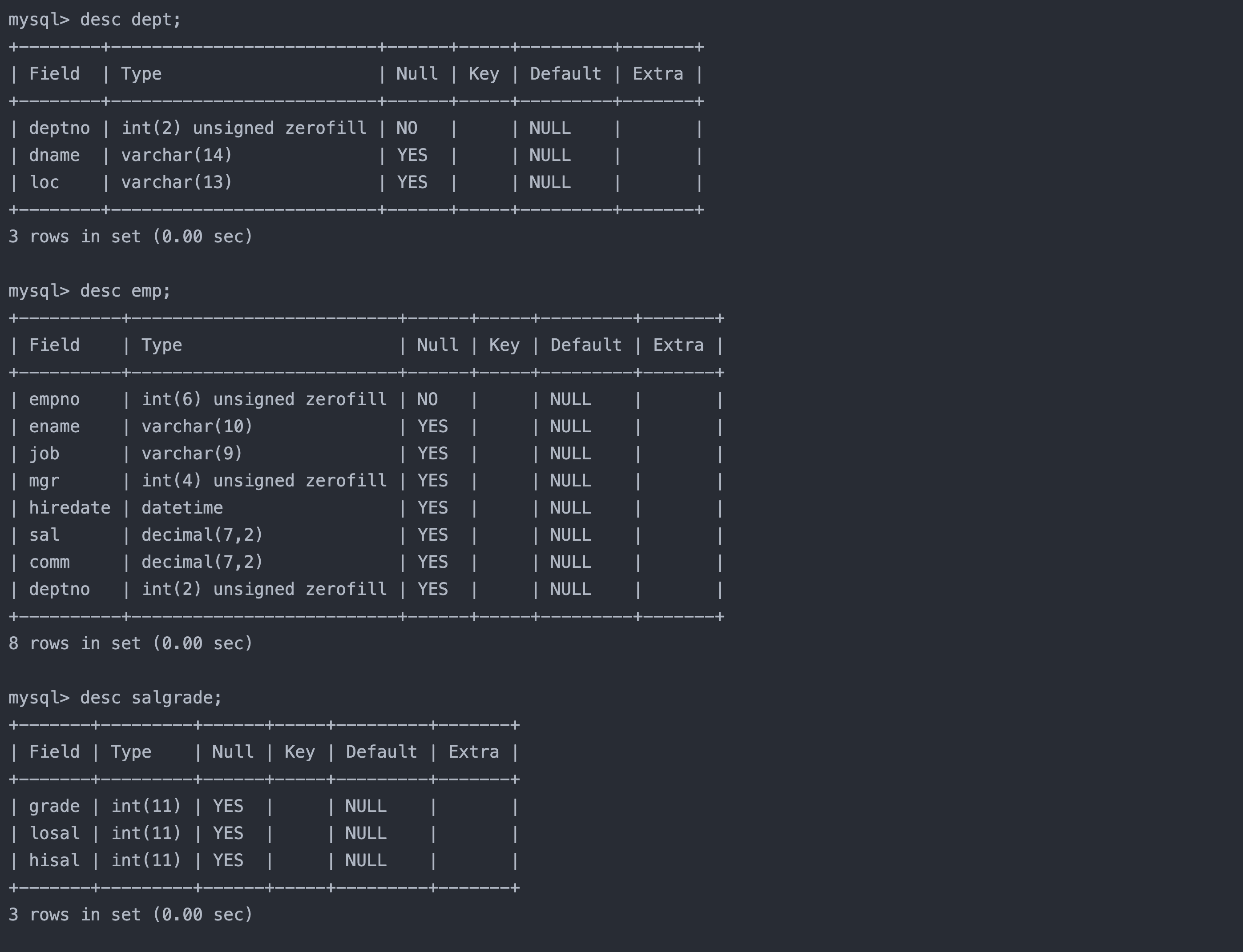
1. 如何显示每个部门的平均工资和最高工资
select deptno, avg(sal), max(sal) from emp group by deptno;
2. 显示每个部门的每种岗位的平均工资和最低工资
select deptno, job, avg(sal), min(sal) from emp group by deptno, job;
3. 显示平均工资低于2000的部门和它的平均工资
统计各个部门的平均工资
select deptno, avg(sal) as myavg from emp group by deptno;3.2 having和group by配合使用,对group by结果进行过滤
select deptno, avg(sal) as myavg from emp group by deptno having myavg > 2000;
注:having经常和group by搭配使用,作用是对分组进行筛选,作用有些像where
SQL查询中各个关键字的执行先后顺序 from > on> join > where > group by > with > having > select > distinct > order by > limit
本节完……








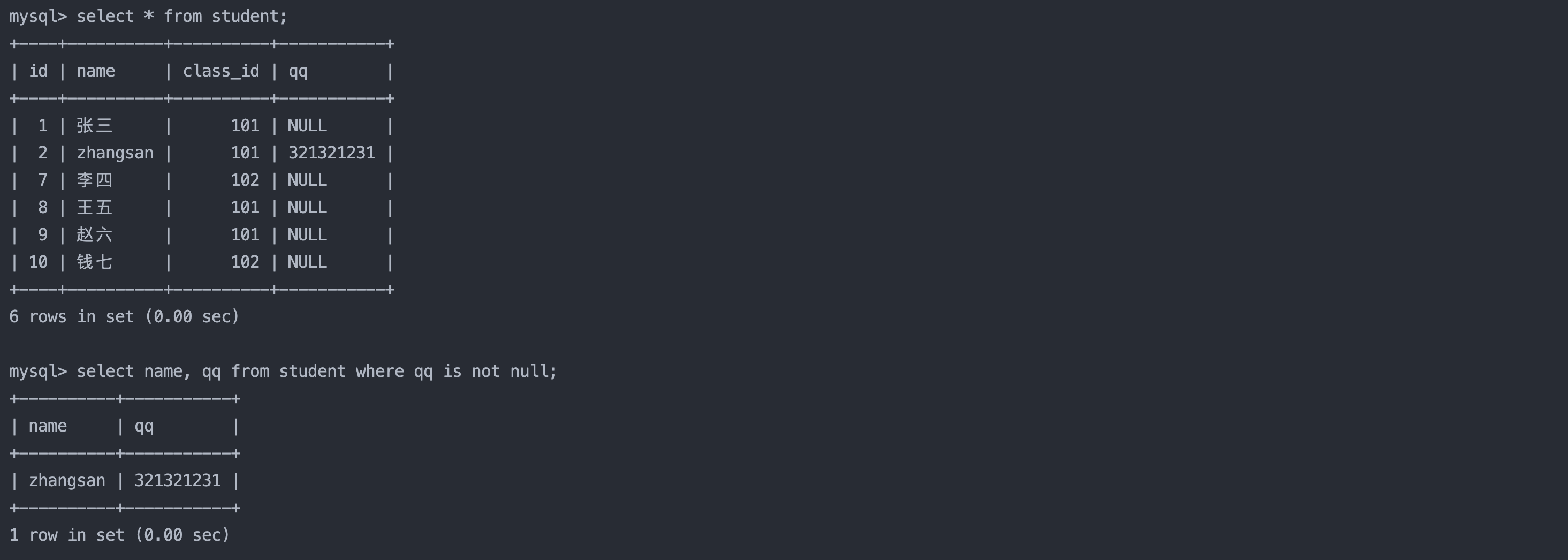






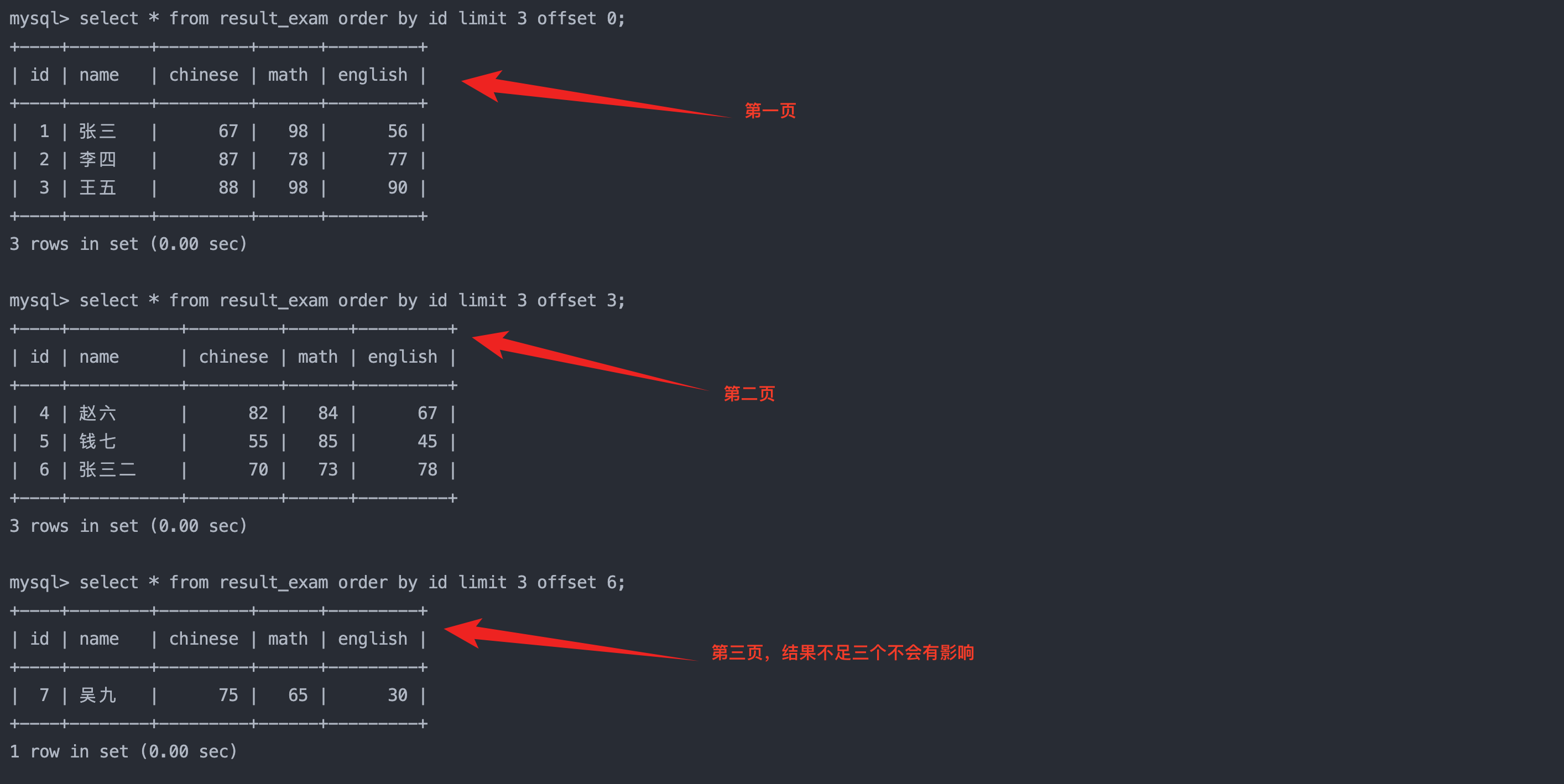

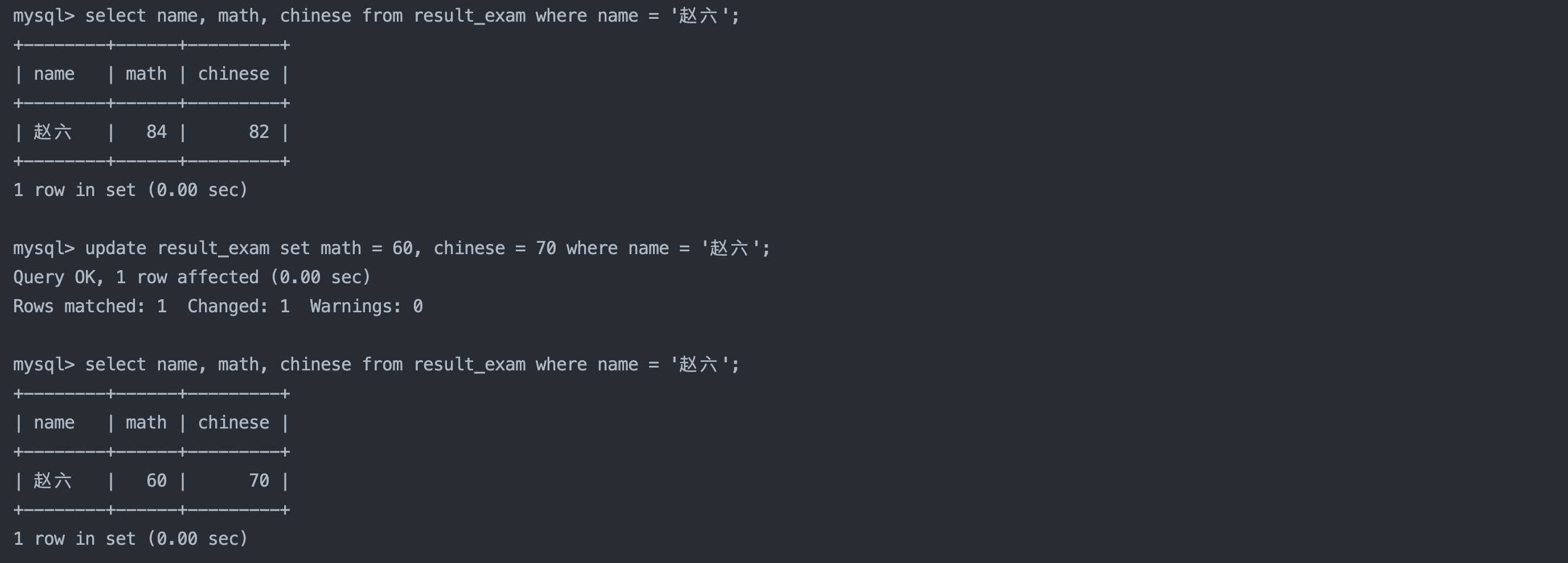
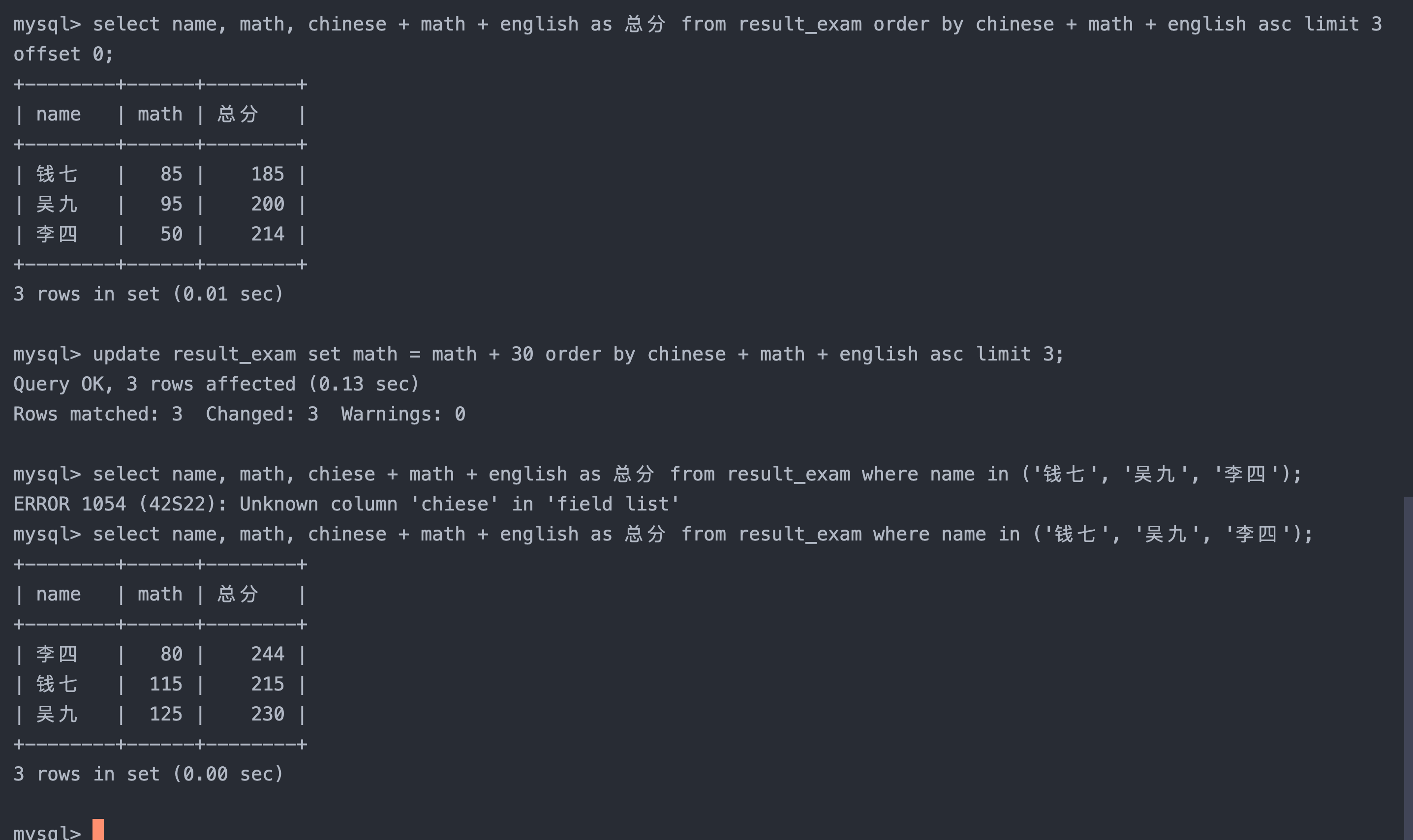


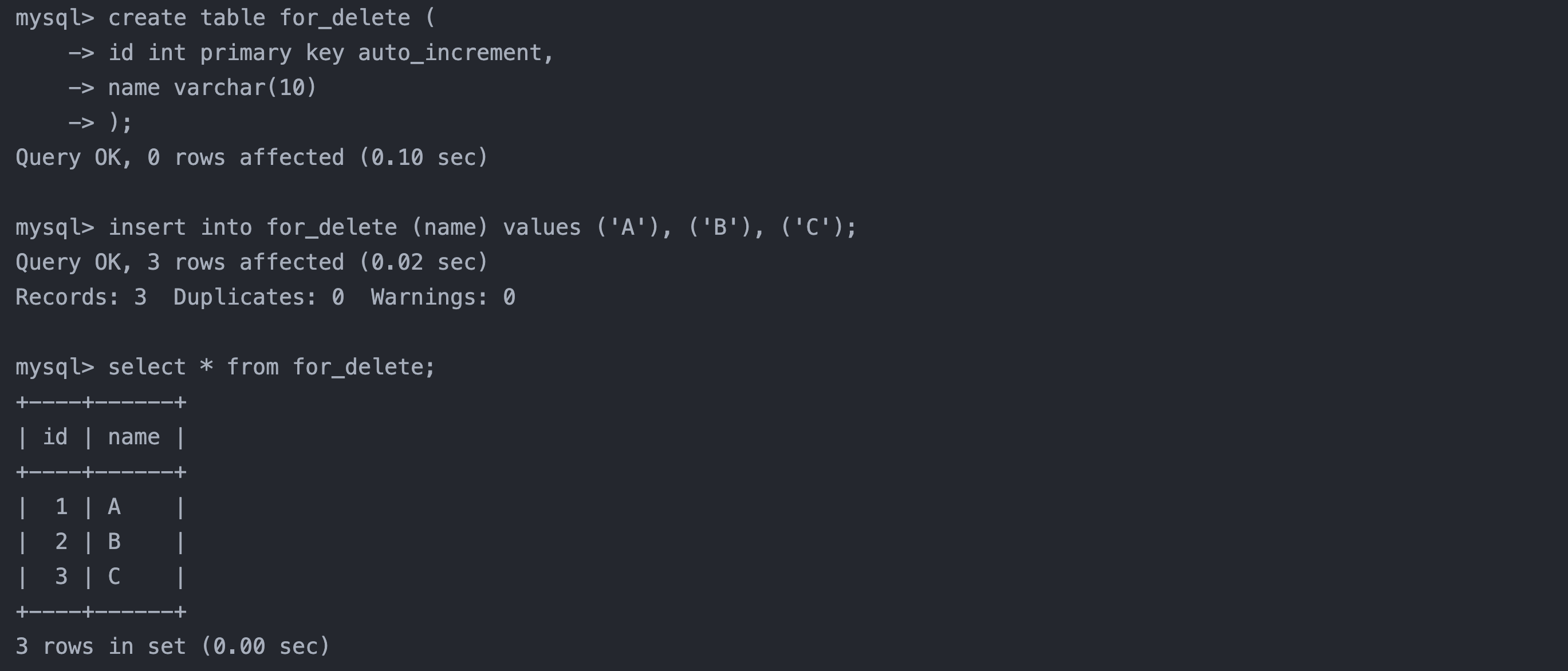

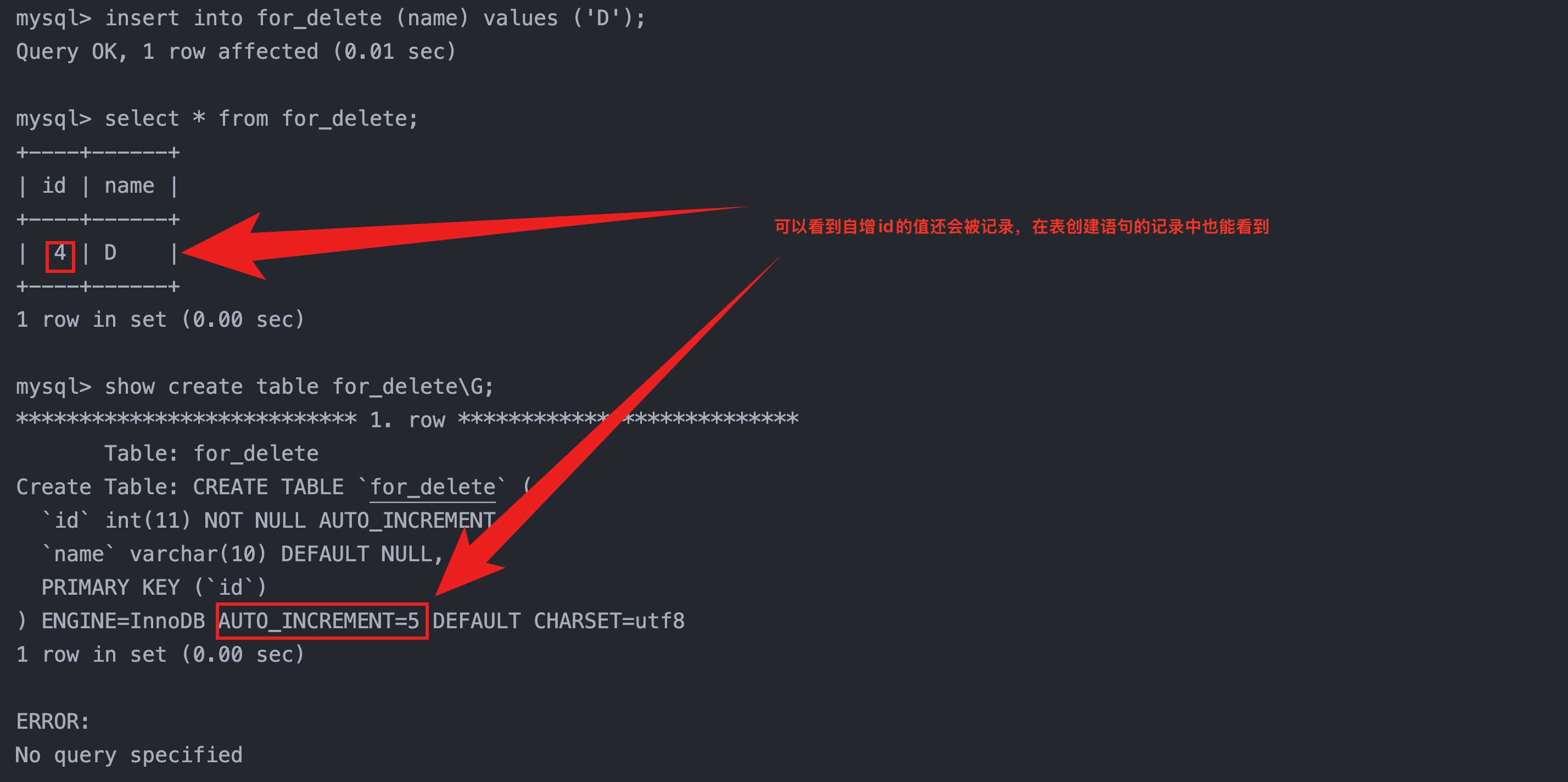
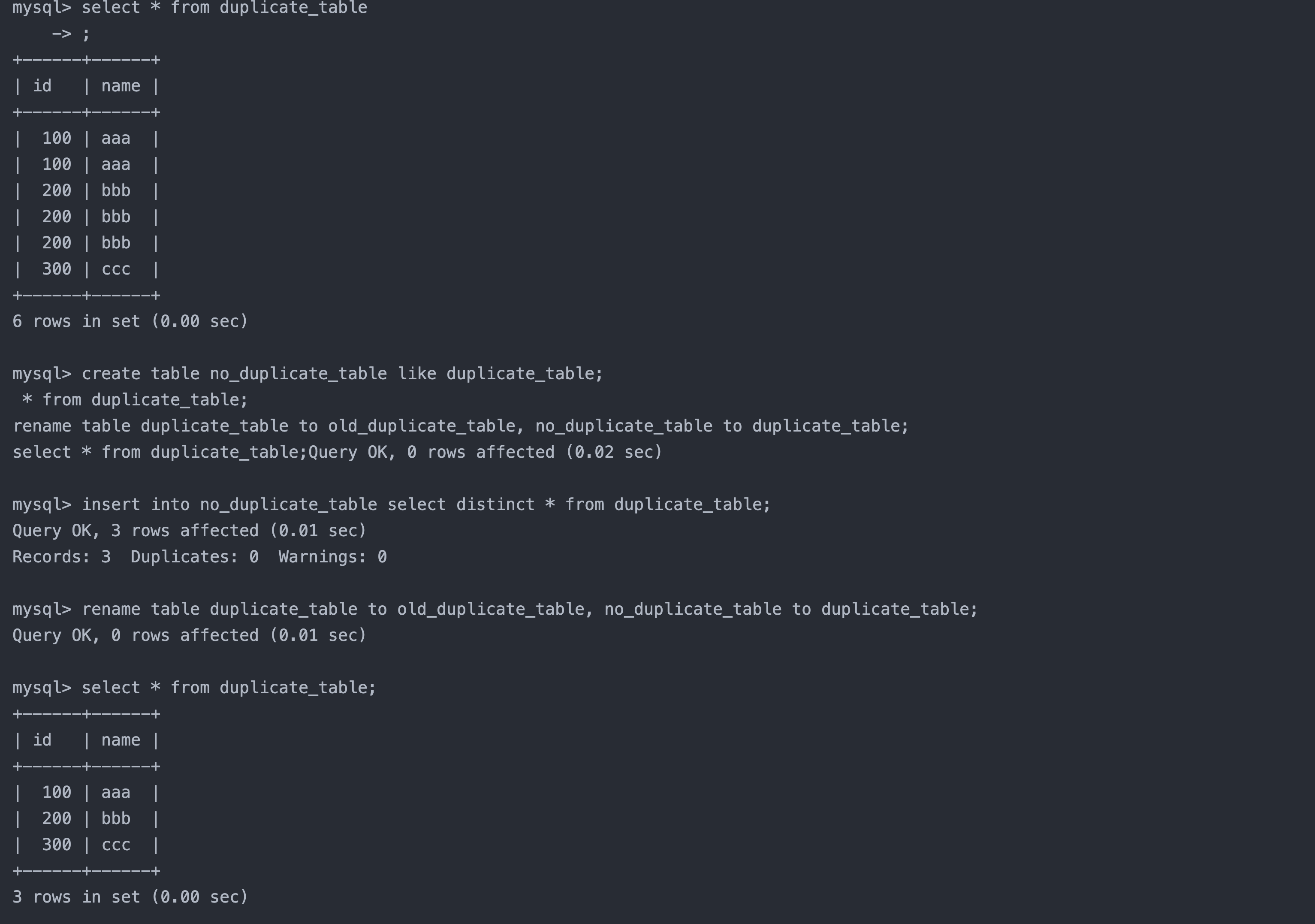
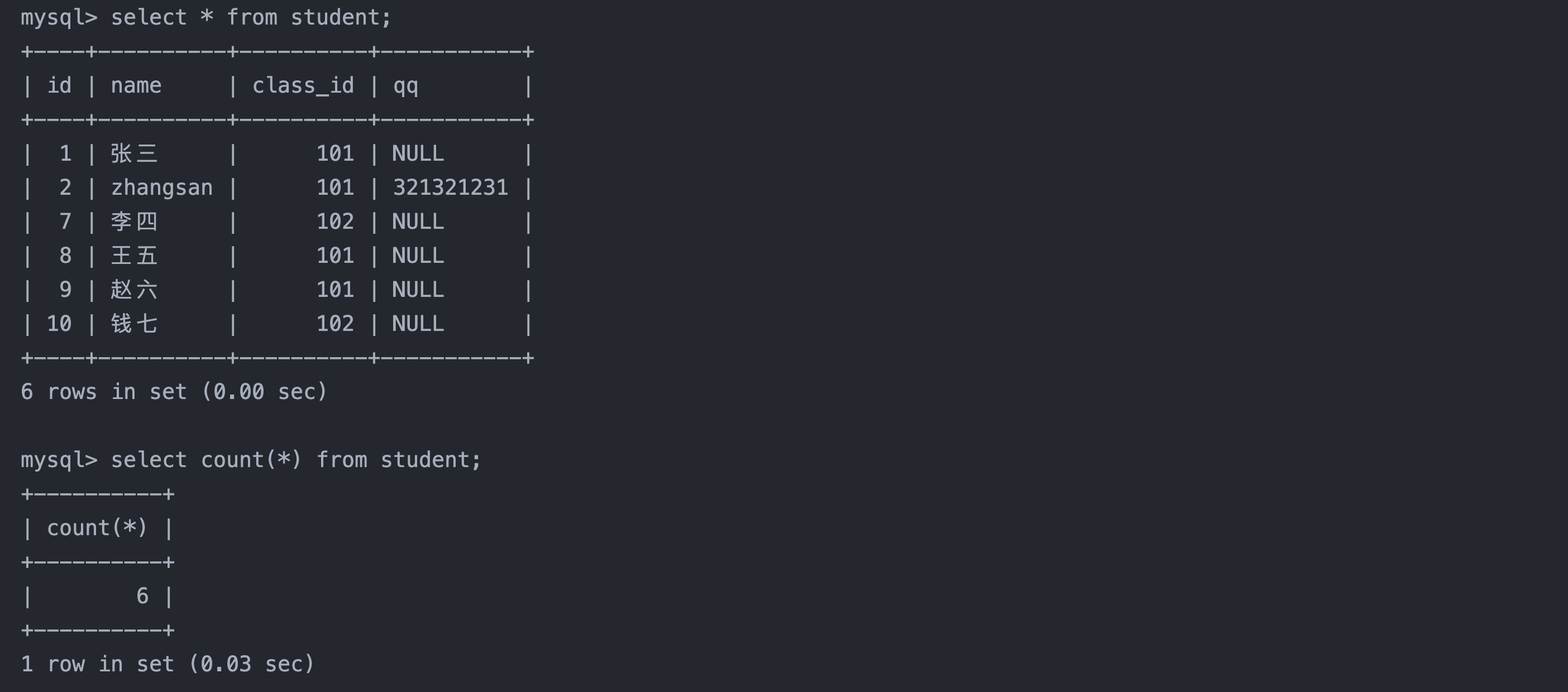
















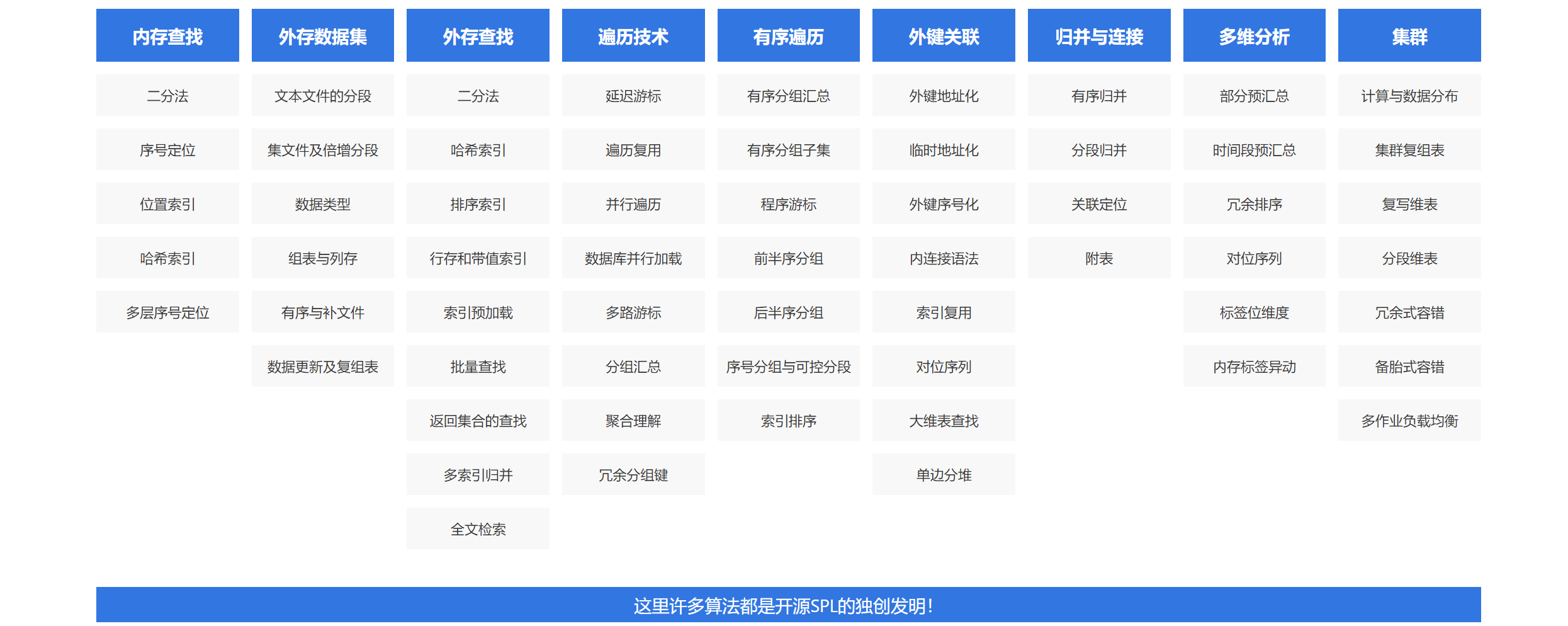





![[全网最细数据结构完整版]第六篇:3分钟带你吃透栈并模拟实现](https://i-blog.csdnimg.cn/direct/84e220d46fa84e4ab1e7dee6d2ec5e42.jpeg)





